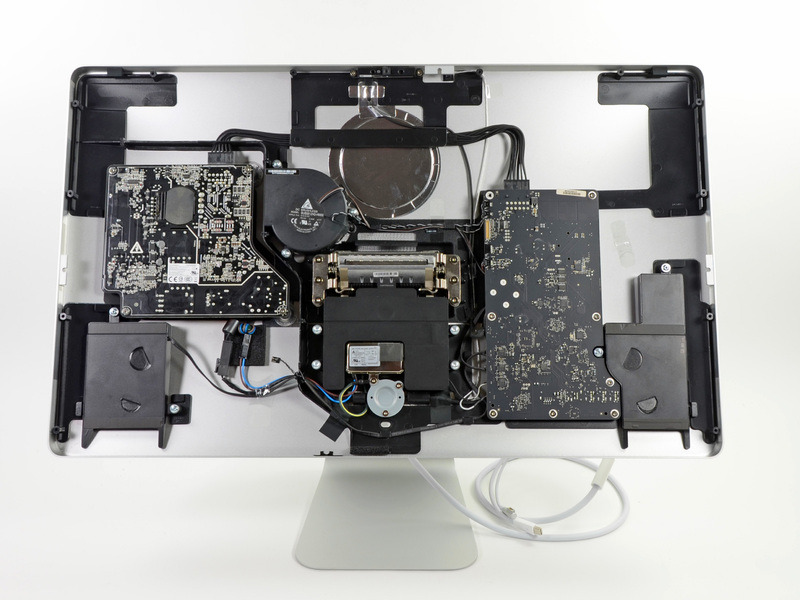The Idea of a Computer is Diffusing

In the future we won’t buy computers, just interfaces.
While ripping apart Apple’s new Thunderbold Display, the iFixit team was greeted with more components than they expected. Reacting to the discovery, Chris Foresman of Ars Technica quipped, “what they found inside is basically a 27” iMac sans Intel processor and internal storage.“
Because it incorporates the PCI express protocol and sports torrential speeds, Thunderbolt is already starting to externalize various parts of your computer. Apple’s Display sports ethernet, USB, and Firewire chipsets. Two of these previously standard interfaces don’t exist in the MacBook Air. You could say the svelte laptop outsourced them to the monitor.
Clear candidates for motherboard expatriation dot the rest of Apple’s lineup. In the 15 and 17 inch MacBook Pros there exists an additional discrete, power-hungry graphics card for use in desktop situations. In light of iFixit’s find, these components make more sense inside the monitor than inside the computer.
Now consider Amazon’s big announcement today. Amazon has stripped each Kindle of every component they can possibly put in their cloud. Storage is an S3 bucket and processing has started to shift to EC2. Doing this helps them keep their costs ridiculously low and speed up performance for the user. Appropriately, Bezos “portrays [the] Kindle Fire as a service,” according to Bloomberg. Certainly Bezos is referring to the media consumption aspect of the Fire, but it’s an interesting descriptor for the device… I mean, “service.”
As our computers diffuse both locally (in the case of Thunderbolt, which spreads several components across your desk) and afar (in the case of the Fire, which ports components to the cloud) the language we use to talk about technology is going to change. Or at least the way we’ll encounter them. Devices will become services. We’ll buy interfaces, not computers, and hard disks will be treated as caches.